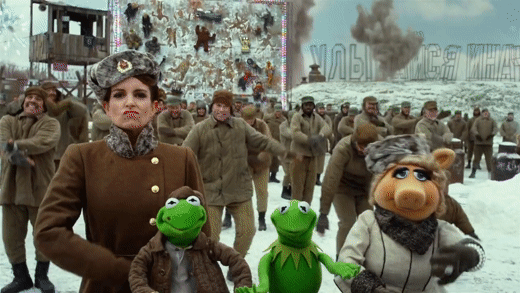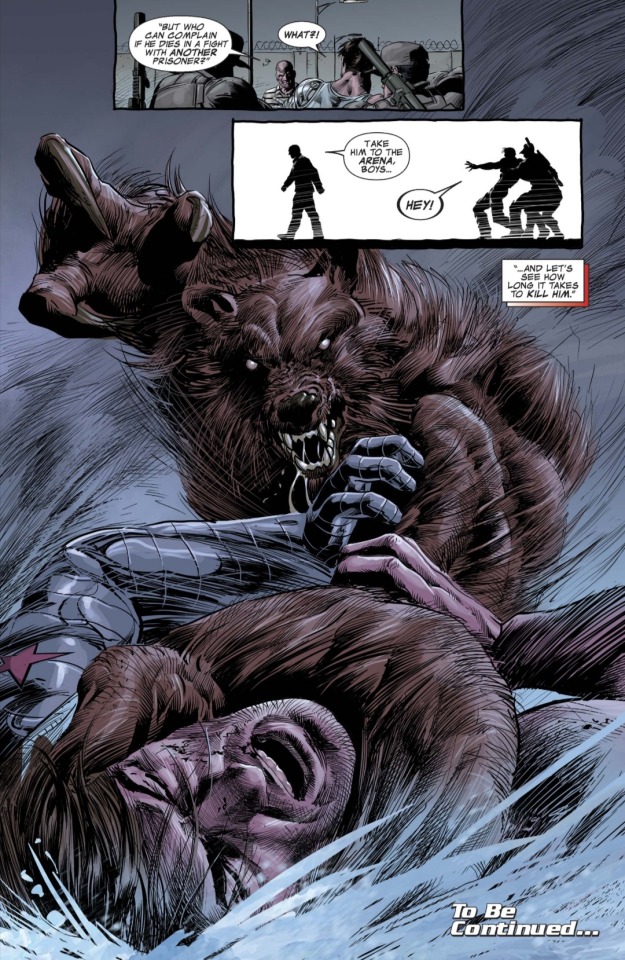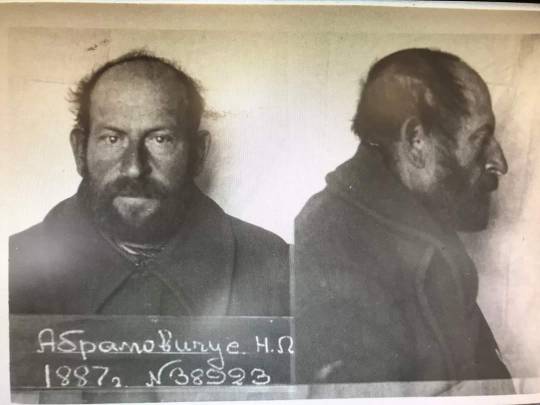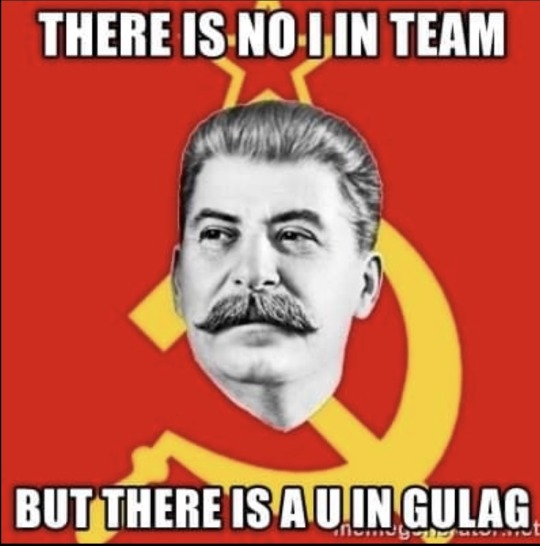#Gulag
Explore tagged Tumblr posts
Text

gulag miku btw... what did she do 😔
#a mildly cursed way to enter this meme#hatsune miku#vocaloid#miku worldwide#brazilian miku#gulag#shes buryat if you even care#needed to get this out of my system#soviet miku#russian miku
4K notes
·
View notes
Text
We are sending people to the Salvadoran gulag for nothing at all.
61 notes
·
View notes
Text

Happy 10th Anniversary to Muppets Most Wanted!
#muppets most wanted#kermit the frog#miss piggy#constantine#constantine the frog#tina fey#gulag#fireworks#muppet#muppets#the muppets#gif#muppet gif#muppets gif#gifs of puppets
244 notes
·
View notes
Text

On 20th June 1940, the Soviets and their collaborators initiated the third wave of deportations of Polish citizens from occupied eastern Poland to camps, collective farms, exile villages and various outposts of the gulag deep in the USSR.
After invading and occupying eastern Poland in 1939, the Soviets arrested hundreds of thousands of Polish citizens over the next two years and transported them to remote regions of Siberia, Kazakhstan and northern Russia in overcrowded cattle cars. Families were torn apart, and those who survived the journey were used as slave labour. Most of the deportees were women and children. Thousands died subsequently from a combination of hunger, exhaustion and disease.
There were four mass deportations from the Soviet-occupied Polish territories prior to the launch of Operation Barbarossa.
The first wave began on 10th February 1940, a few weeks before the Soviet NKVD carried out what became known as the Katyń massacre. The second wave began on 13th April 1940, when the massacre had already begun.
The first two mass deportations included the families of the Katyń massacre victims - 8000 Polish army officers, 6000 police officers and thousands of university lecturers, teachers, doctors, lawyers, civic leaders, politicians, government officials, priests and other members of the “bourgeoisie”.
The third wave took place between June and July 1940.
The fourth wave occurred in May and June 1941. Tens of thousands of Estonians, Latvians and Lithuanians were also deported at the same time.
Approximately 120,000 of the Polish deportees managed to escape from the USSR in 1942 with the Anders Army, and were forced into a life of exile after the war. The survivors who made it back to communist Poland were forced into silence for decades, until Poland finally regained its independence in 1989….
18 notes
·
View notes
Text
I love how USA falls into fascism, everything blocking president power is removed, secret police goes around catching random people and sending them into a GULAG on foreign territory that is famous for being one of the worst places on Earth.
And every group, every minority, every civil/public/political organization is hoping that tonight it would be their neighbors, not them.
Of course, USAmericans are mostly extremely racist white people, who would like their kids be thrown into woodchipper before vaccination, but still.
EVERY USAmerican has enormous power in their hands. You have guns sold on every corner, for fucks sake. Molotov's are almost free, considering that you drink petrol anyway.
It is incredibly easy for ANY popular musician or blogger to create a fucking riot that will paralyze the city. Like genuinely, it had been done before. Just make a fan meeting and march towards somewhere.
Why are y'all so weak? I am a Ukrainian, so toppling governments is basically our second job, but such countries as Greece, Turkey, Serbia or even Iran has erupted into massive protests in last years. Dozens of government, sometimes more totalitarian were overthrown by peacefull-ish protests in the last 10 years.
All I'm gonna say, it CAN be done. It's almost easy, if you're noisy enough. But the fact that all of you are spending so much time on finding excuses instead of building networks, organizing strikes and roadblocks or creating hostile environment to fascists is just showing that you don't really care if your friends gets send into THE torture camp for certain and painful death. You just don't want to look bad for silently watching, or even showing their door for ICE agents :(
#fuck trump#fuck maga#fuck usa#usa politics#donald trump#trump#krasnov#usa#ice#mass deportations#united states#gulag#thank God i'm not a USAmerican
20 notes
·
View notes
Text

Excerpt from 'Road of Bones' by Jacob Aue Sobol
Running 2031 km from Yakutsk to Magadan, the “Kolyma Highway” has a dark past. With untold numbers of Gulag prisoners buried beneath the highway, the “Road of Bones” continues to claim new lives every year. In literally one of the coldest parts of the inhabited world, the Kolyma region’s residents seem to exist in pure defiance – it is this way of life, these people surviving under extreme conditions in the shadow of a gruesome history, that I wish to engage with and portray.
From 1932 to 1953, millions of victims of the Soviet repression were sent to forced labor camps in Siberia. 80 of Stalin’s Gulag camps were established in the Kolyma region alone holding a mixture of ordinary criminals and political prisoners from all over Europe. One of the largest Gulag operations was the construction of the 2031-km-long “Kolyma Highway”. Built by prisoners who were literally worked to death, it connected Magadan with the mountainous interior, opening up the region to gold mining while at the same time connecting it to the outside world.
Untold numbers died constructing the highway across the frozen ground. Buried where they fell, the prisoners’ corpses were often incorporated into the foundation of the road to protect it from the permafrost, giving the road its most common nickname: Road of Bones. Prisoners said that there was one body for each tree cut down to clear the forest...
+ images/further reading: https://phmuseum.com/projects/road-of-bones-1
#Jacob Aue Sobol#Road of Bones#photobook#Kolyma Highway#Gulag#Gulag labor#russia#russian history#stalin#extortion#exploitation#labour camps#kolyma: land of gold and gulags
27 notes
·
View notes
Text

Mask of Sorrow (1996, dedicated to the memory for the prisoners of Gulag)
Magadan, Russia
Sculptor : Ernst Neizvestny
47 notes
·
View notes
Text
I'm just gonna say it: I have very mixed feelings about the Soviet Union.
On the one hand, the Soviet Union has been a special interest of mine since I was about sixteen and I love learning about Soviet history, especially regarding the Soviet space programme but also just things about the way people lived. I love Soviet music and the few Soviet movies I've seen. As something of a leftist I like how the Soviet Union made advances in education and worker's rights that were only possible in a socialist system. Soviet women had rights long before women in capitalist countries did. I find the ethos of the Russian dreamers of the early Soviet Union quite inspirational. As I'm applying for jobs I've caught myself wishing I lived in the USSR and could just be assigned a job upon finishing my degree. I also unironically want to live in a society where jeans are banned.
But I know I wouldn't last a day in the Soviet Union, and ultimately I'm glad that the Soviet Union collapsed because it meant the end of oppressive Russian imperialism in Ukraine and the Baltics (at least for some time). Stalin was an asshole who attempted multiple genocides: against the Ukrainians, the Crimean Tatars, the Jews. Arguably Stalin's genocide against the Ukrainians influenced modern-day Russia's genocide against the Ukrainians. Soviet antisemitism still kills Jews today, since the Soviet Union was behind the creation of Palestinian nationalist groups. Overall, despite everyone officially being equal, there was a lot of racism against anyone who wasn't ethnically Russian. So many people suffered under the gulag system, which was not what internet slavaboos would have you think it was. So many people lived meaningless lives, no different than their counterparts in capitalist countries. And although the Russian Empire was an oppressive empire that one should not long to return to, the Soviet determination to put it on the ashpile of history killed the few good things that came out of the Russian Empire: the literature and philosophy, a prominent vegetarianism movement that was denounced as bourgeois, the Mir commune which was an actual communist community.
Why am I saying all of this about a long extinct country that no one in my family ever lived in? I just be like that.
#rant#history#ussr#communism#socialism#feminism#ukraine#jumblr#palestine#Israel#gulag#stalin#anti capitalism#philosophy#советская космическая програма#ссср#россия#комунизм#мир#российская империя
29 notes
·
View notes
Text
"The idea of mothering and procreation morphed into Gorky’s fascination with prisoner transformation and perekovka. The labor camp would be the mother of a new working class. Both god-building and the maternal impulse dovetailed with the author’s largest philosophical and intellectual preoccupation: human fashioning. Whether it was the literal, biological creation of the human by the maternal womb or the transformation afforded by a personal journey or individual greatness, Gorky remained intrigued by the individual’s ability for creation, journey, and self-discovery. Maintaining that humans were inherently malleable and eternally improvable, he believed in the potential for endless refinement through diligent effort.
Gorky’s special relationship to the Belomor project allows for an understanding of his career as a symbolic representation of the ideals promoted at the camp. Gorky was a staunch enthusiast of prisoner labor and even predicted the possibility of a waterway similar to Belomor in his early works; in the April 1917 issue of his journal New Life (Novaia zhizn’) he writes
Imagine, for example, that in the interest of the development of industry, we build the Riga-Kherson canal to connect the Baltic Sea with the Black Sea […] and so instead of sending a million people to their deaths, we send a part of them to work on what is necessary for the country and its people.
Gorky’s condoning of Gulag camps such as Solovki and Belomor seems paradoxical to many scholars in light of his humanitarian endeavors, and some speculate either that Gorky was ignorant of the full extent of Stalin’s butchery or that he was aware, but was in a position that necessitated acquiescence to safeguard his well-being. When viewed in the context of his philosophical outlook on literature and labor, however, his support of prison camps seems not like an aberration but rather a natural extension of his belief in violent re-birth, a belief related to Marxist-Leninist ideology and the concept of god-building. Gorky sees people and language alike in the framework of craftsmanship. Perhaps his mistake was not so much his general support of Gulag projects, but his belief that human flesh can be formed like words on a page or cement in a factory. Gorky, after all, cared more about the craft than people themselves; in his 1928 essay “On How I Learned to Write” (O tom, kak ia uchilsia pisat’), he claimed that “the history of human labor and creation is far more interesting and meaningful than the history of mankind.” Gorky was key to the canal project because his philosophical interests exemplify the very core of Belomor: the violent transformation of people through creative acts.
Technology’s magic demonstrated humans’ usurpation of God in a tangible way, with the ever-widening capacity to harness and transform the natural environment showcasing the potential of man-made machines. Soviet pilots were imagined as literal incarnations of the New Man, and the massive expansion of the Soviet aviation industry in the mid 1920s provided some of the most concrete evidence of human superiority over the divine. Short voyages known as “air baptisms” (vozdushnye kreshcheniia) supposedly eradicated peasants’ belief in God while highlighting the majesty of Red aviation. In such “agit-flights,” pilots would take Orthodox believers into the skies and show them that they held no celestial beings. Those who participated in the flights would narrate their experiences to neighboring villagers, describing “what lies beyond the darkened clouds.” This phrase served as the title of a 1925 essay by Viktor Shklovskii in which a village elder embarks upon a conversional agit-flight that he later recounts to his fellow peasants. Six years later, Shklovskii participated in the writers’ collective that coauthored the now infamous monograph History of the Construction of the White Sea-Baltic Canal, in which a different, often deadly, type of technological program offered the promise of conversion. In both instances, darkness will be overcome by the enlightening potential of socialist rationalism: aviation will liberate the peasants from their ignorant beliefs, just as labor will supposedly bring the Belomor prisoners to the light of Soviet ideology. Such endeavors occurred before the backdrop of a larger civilizing project, since both the rural reaches of peasant villages and the wild expanses of untouched Karelia necessitated modernization.
Yet could such projects ever be completed? Did the New Man really exist, and could his creation ever be achieved? The messianic vision of Soviet socialism necessitated that paradise lie always just out of reach.
Similarly, Nietzsche posits the development into the Übermensch as a perennially elusive goal; like the Faustian concept of striving, the individual is forever trying to perfect oneself without necessarily ever achieving perfection. This constant yearning renders the present as the future, as the purpose of today is necessarily the reward of tomorrow. In the Soviet Union, the regime assured people that the difficulties they endured were required in order to reach the svetloe budushchee (radiant future), a utopia found at the end of an interminable road. In the absence of an end result or final destination, the voyage itself becomes the site of cultural exploration."
- Julie Draskoczy, Belomor: Criminality and Creativity in Stalin’s Gulag. Boston: Academic Studies Press, 2014. p 30-32
#maxim gorky#new man#belomorkanal#belomor#gulag#white sea baltic canal#Беломо́рско-Балти́йский кана́л#prison camp#work camp#soviet history#soviet union#stalinism#academic quote#reading 2024#history of crime and punishment#perekovka#russian revolution#soviet communism
44 notes
·
View notes
Text
Every now and then I remember the time when Bucky fought against Ursa Major in Gulag and how he won even though he was a simple human (with a bionic arm ofc but you know what I mean xD)



One of my silly little hopes is to see an adaptation of the arcs: The Trial of Captain America (or Bucky Barnes at least) and Gulag.
(I'm delusional I know 🤡)
.
.
.
For those interested:
Trial of Captain America: Captain America (2004) #611-615 & #615.1
Gulag: Captain America (2004) #616-619
#bucky barnes#winter soldier#james buchanan barnes#Buckycap#ursa major#gulag#ed brubaker#trial of captain america#captain america 2004#captain america vol 5#delulu
85 notes
·
View notes
Text

A group of Polish women logging near Sverdlovsk, after being deported for slave labour to the USSR in 1940…. On 13th April 1940, the Soviets and their collaborators initiated the second wave of deportations of Polish citizens from occupied eastern Poland to camps, collective farms, exile villages and various outposts of the gulag deep in the USSR.
In 1940 and 1941, the Soviet authorities arrested hundreds of thousands of Polish citizens and transported them to remote regions of Siberia, Kazakhstan and northern Russia in overcrowded cattle cars. The journey itself was often deadly, with insufficient food, water or medical care. Families were torn apart, and those who survived the journey were used as slave labour.
Most of the deportees were women and children. Thousands died subsequently from a combination of hunger, exhaustion and disease.
There were three other mass deportations from the Soviet-occupied Polish territories prior to the launch of Operation Barbarossa.
The first wave began on 10th February 1940, a few weeks before the Soviet NKVD carried out what became known as the Katyń massacre.
The first two mass deportations included the families of the Polish officers who the Soviets murdered in April and May 1940.
The third wave took place between June and July 1940.
The fourth wave occurred in May and June 1941. Tens of thousands of Estonians, Latvians and Lithuanians were also deported at the same time.
Approximately 120,000 of the Polish deportees managed to escape from the USSR in 1942 with the Anders Army, and were forced into a life of exile after the war. The survivors who made it back to communist Poland were forced into silence for decades, until Poland finally regained its independence in 1989….
#deportation#gulag#history#this day in history#second world war#world war 2#poland#polska#ussr#soviet union#russia#war crime#1940
12 notes
·
View notes
Text
6 notes
·
View notes
Text
Trump Defies Judge to Deport Venezuelans to Salvadoran Slave Jail
youtube
#modern slavery#slavery#gulag#the gulag archipelago#venezolana#el salvador#trump#martial law#trump 47#constitutional crisis#separate but equal#checks and balances#seperation of powers#judicial branch#judiciary#rip democracy#beginning of the end#it will just get worse#Youtube
5 notes
·
View notes
Link
Es que no sé ni por dónde empezar pic.twitter.com/DKFPsyn3lg
— Marta Pérez (@martape_psyfo) October 3, 2024

12 notes
·
View notes
Text
Nachman Abramovich in Siberian heavy labor gulag, 1941.
He was one of the 3000 Jewish people from Lithuania: among whom were doctors, teachers, businessmen, and common laborers, exiled to Siberia with tens of thousands Lithuanians and other nationalities in June of 1941, most dying from harsh conditions.

That's just in case you thought Soviets/russians were somehow less antisemitic.
Edit - more about Nachman:
He owned a hotel in the city of Taurage and got exiled because of it with his wife and 3 children. He was separated, as most men were, and sent to heavy labor gulag while his wife and kids were sent to Komya.
Ironically, he's the grandfather of russian oligarch Roman Abramovich.
119 notes
·
View notes
